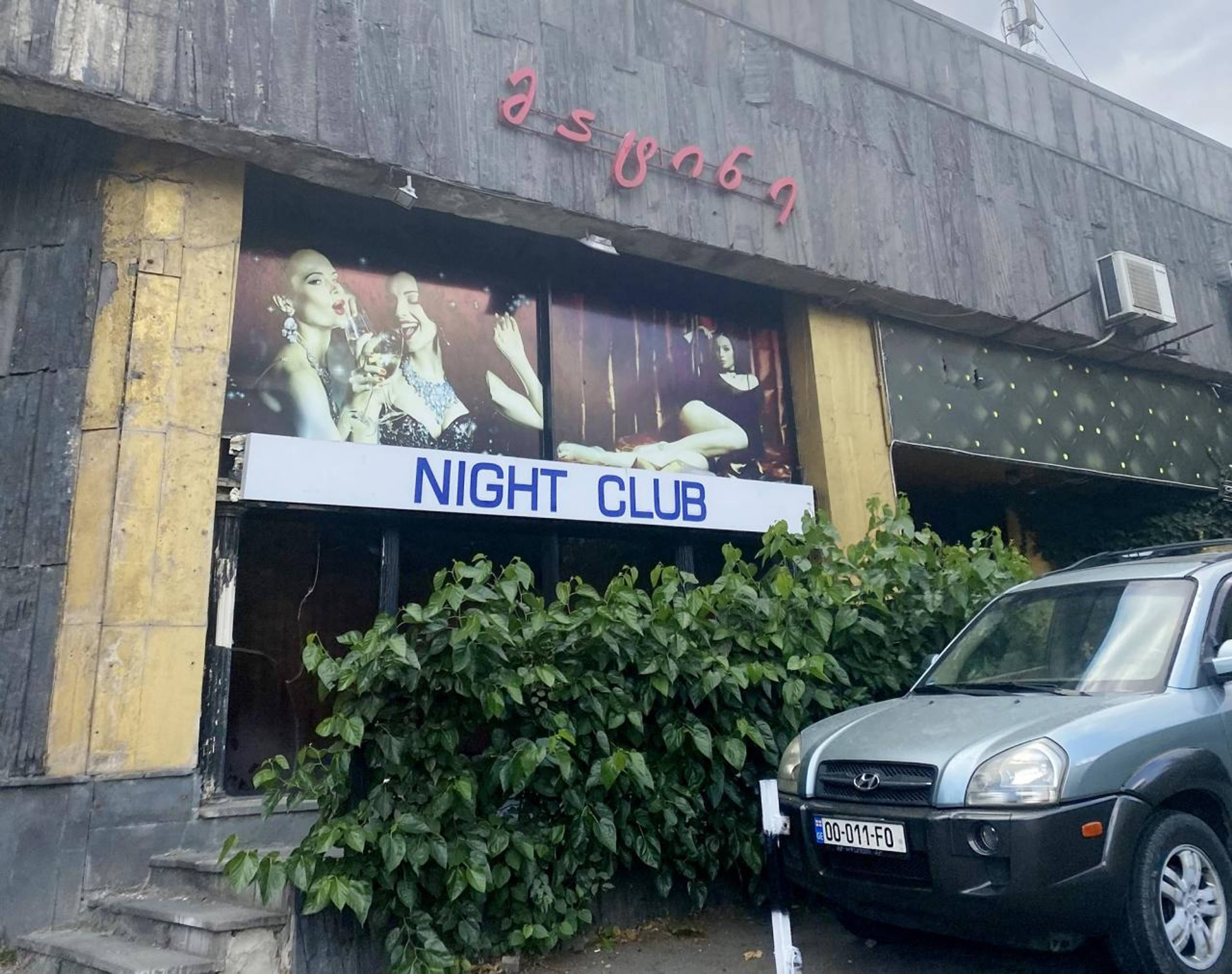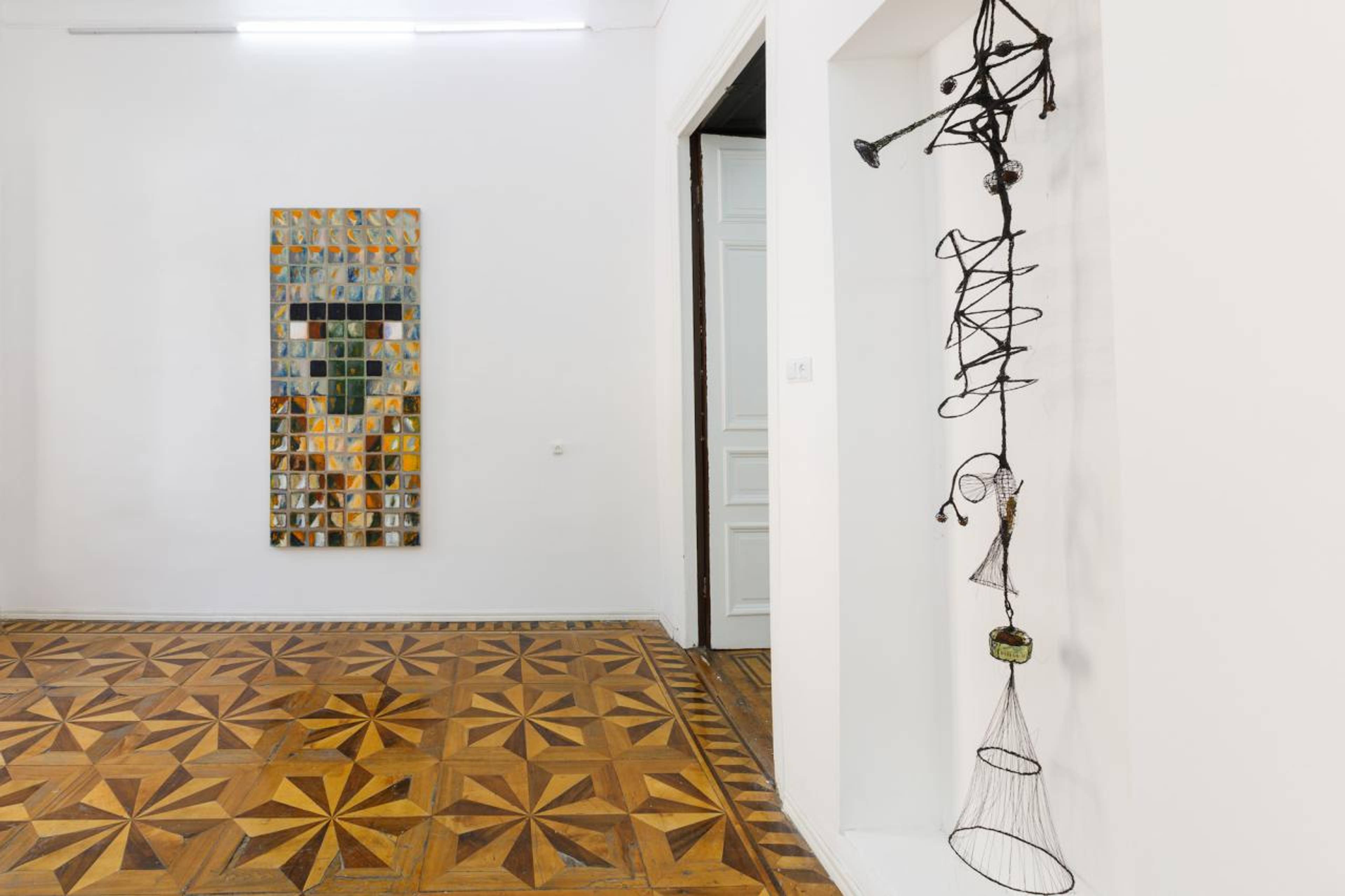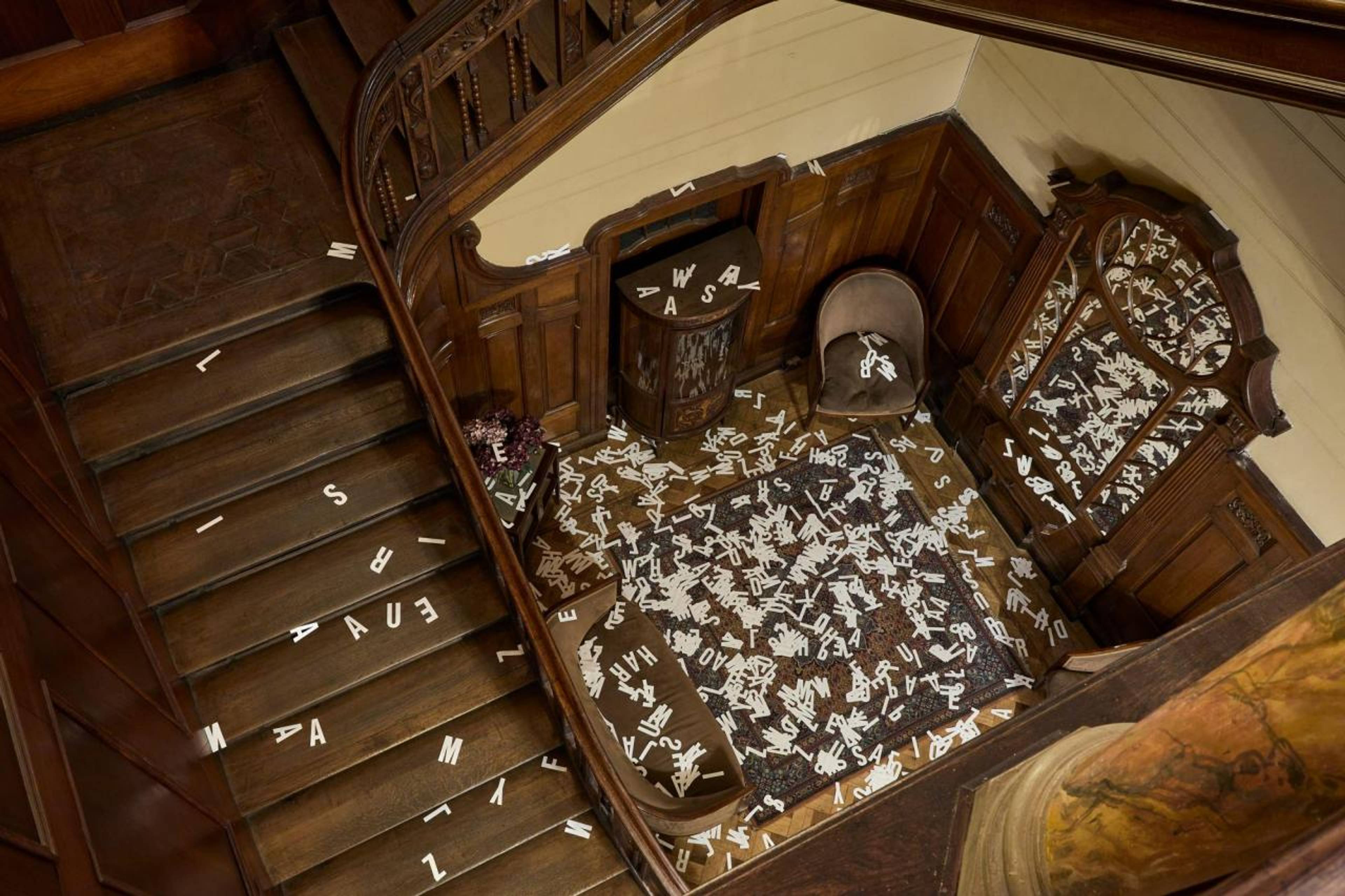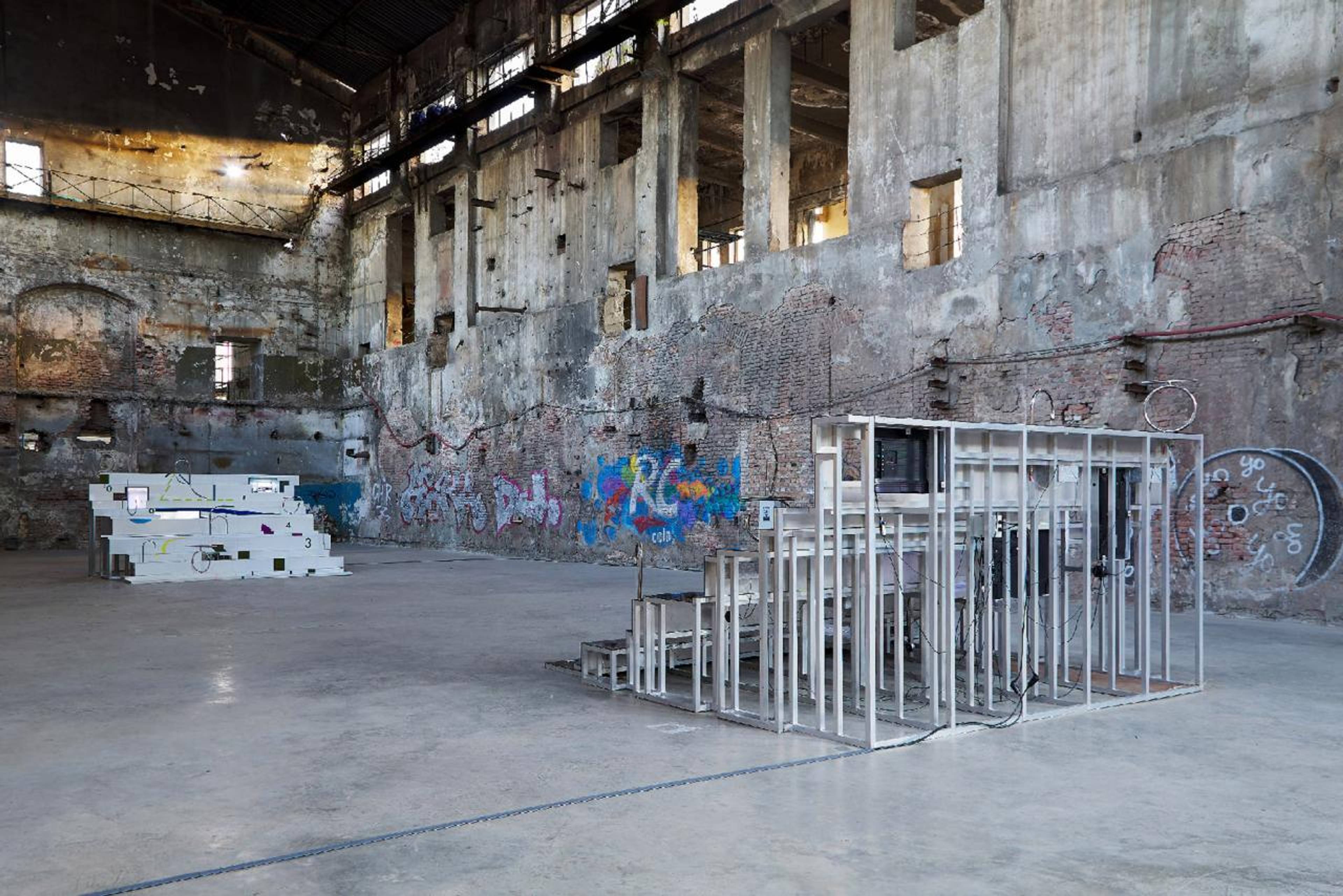Even surrounded by a Russian regime in total delinquency, Tbilisi is sustaining its tradition of hospitality, intellectual independence, and cozy bohemianism. Feasts, orange wines, clubs, sexy bears, and an impressive array of straggly art and cinema projects continue to animate this Caucasian enclave.
This past September, we visited the city for the third edition of the Tbilisi Art Fair, which took place once more in a Soviet modernist building hosting galleries with international flair. A series of talks organized by the curator Elene Abashidze likewise offered a panoramic view of the fair’s international ambitions and included a panel with Gean Moreno, curator of programs at ICA Miami; Irena Popiashvili, founder of Kunsthalle Tbilisi; and Inga Lāce, C-MAP central and eastern Europe fellow at MoMA, New York, who discussed tensions between local markets and global art infrastructures and making art under the threat of war.
The question of war was in the air all weekend, especially after Putin’s partial military mobilization drove hundreds of thousands of Russian migrants to cross into Georgia, while the news commentary on the military aggression in Ukraine was anxious and constant. In the tradition of ravers from the club Bassiani, who protested in front of the Parliament in 2018, Tbilisi has responded to recent geopolitical upheaval by celebrating artists, nightlife, and queer culture.
Photo: Charles Teyssou & Pierre-Alexandre Mateos
As with all good fairs, visitors came for the art, but stayed for the parties. Friday night didn’t break this rule, as we followed a cosmopolitan congregation to the club Left Bank, where a party organized by the queer collective Eau de Cologne featured poppers served à discretion.
The following day was difficult, but redeemed by a Youtube session devoted to the cinematic pantheism of Sergei Parajanov, who recounted the folk traditions and mysticism of the Caucasus with a surrealist, visionary, and DIY flamboyance, like an impromptu meeting between Kenneth Anger, Jean Cocteau, and Pier Paolo Pasolini.
Following a voluptuous chikhirtma (chicken soup), we visited Florian Meisenberg’s show at the grungy and domestically gracious curatorial project E.A. Shared Space. The exhibition is a game of dupes and illusions both textured and evanescent, weaving together a painted adaptation of Yukio Mishima’s novel Confessions of a Mask (1949); dried vegetables entangled in plastic lace; furtive images like stray dogs on disintegrated screens; and a vanity placed on the floor.
Florian Meisenberg, Confessions of a Mask, 2022. Installation view, E.A. Shared Space, Tbilisi
At the Writers’ House of Georgia, curator Monika Čejková’s nomadic project “Ora e lege,” which connects contemporary art to the Benedictine monastic order, presented a performance by Austrian artist Barbara Kapusta and concrete poetry by British artist Sue Tompkins, as well as a dialogue between mid-century artists like Ewa Partum and Susan Howe on one side, and post-digital and experimental poets on the other. Discreetly elegant and surreptitious, “Ora e lege” allowed itself to comment on what may and may not be said in political and religious contexts. The Lord works in mysterious ways.
Soon after, we all headed to see the reiteration of Anna K.E.’s REARMIRRORVIEW, Simulation is Simulation, is Simulation, is Simulation…, first presented at the Georgian Pavilion at the 58th Venice Biennale in 2019. Displayed in the middle of a monumental, abandoned industrial building, spectators were invited in front of a stage-platform built from minimal, metallic fountains and colored, choreographic landmarks. Part fluid architecture, part video game set, and part biomechanical tribunal, Anna K.E used the relations between performance, architecture, vision, and movement to create a disrupted dimension where we were strangely affected by both the digital and the material.
Ewa Partum, Active Poetry, based on the poem სიმფონია ფესვების (The Symphony of the Roots) by Galaktion Tabidze in Polish translation (Pieśń korzeni), 1971/2022, white cardboard letters, dimensions infinite. Courtesy: the artist
Hiding our bleary eyes under anthracite sunglasses, we chased off our hungover agony in a sulphuric bath in the old city, where classic wink-wink, nudge-nudge erotics unfold amid a perfume of rotten eggs. Later, we made a trip to the neon-velvet Klara Bar for a boozy discussion about poet François Villon with artist Andro Eradze, followed by a fugitive visit to Fungus Gallery and its rabbit mascot. We all ended up in the techno cathedral Bassiani, which hosts Horoom, the largest queer night in the Caucasus. Stoic and drunk, we witnessed a communion between a Ukrainian designer, a Parisian solitary, a Düsseldorf himbo, and a Saint Petersburg tech bro. Throughout the night, the outsiders, loners, ordinaries, clowns, and catalysts drank and danced to the fall of civilization, and for a brief moment, every nationality was irrelevant. There is still hope after dark in dancing in the ruins of the collapsing world.
Anna K.E., REARMIRRORVIEW, Simulation is Simulation, is Simulation, is Simulation…, 2019. Installation view, TEC, 2022. Photo: Artbeat
Galleries and Independent Spaces
E.A. Shared Space
10/2 Pavle Ingorokva St, 0108 Tbilisi
LC Queisser
10 Giorgi Mazniashvili St, Tbilisi,
Artbeat
14 Pavle Ingorokva St, Tbilisi
ATINATI'S
Ingorokva 17 / April 5 Street, 0105 Tbilisi
Project Fungus
thefungusproject@gmail.com
Museums and Institutions
Tbilisi Art Fair
Exhibition Center Expo Georgia, 118 Tsereteli Ave., 0119 Tbilisi
Kunsthalle Tbilisi
Address n/a
Georgian Museum of Fine Arts
7 Shota Rustaveli Ave, Tbilisi
Restaurants
Honoré
4 Constitution St, Tbilisi
Café Daphna
Dry bridge, 29 Atoneli St, Tbilisi
Keto and Kote
3 Davit Toradze St, 0179 Tbilisi,
Bars & Clubs
Left Bank
10 Nikoloz Baratashvili, 0102 Tbilisi
Bassiani
2 Akaki Tsereteli Ave, Tbilisi
Klara Bar
1 La Kargareteli Street, Tbilisi
___






